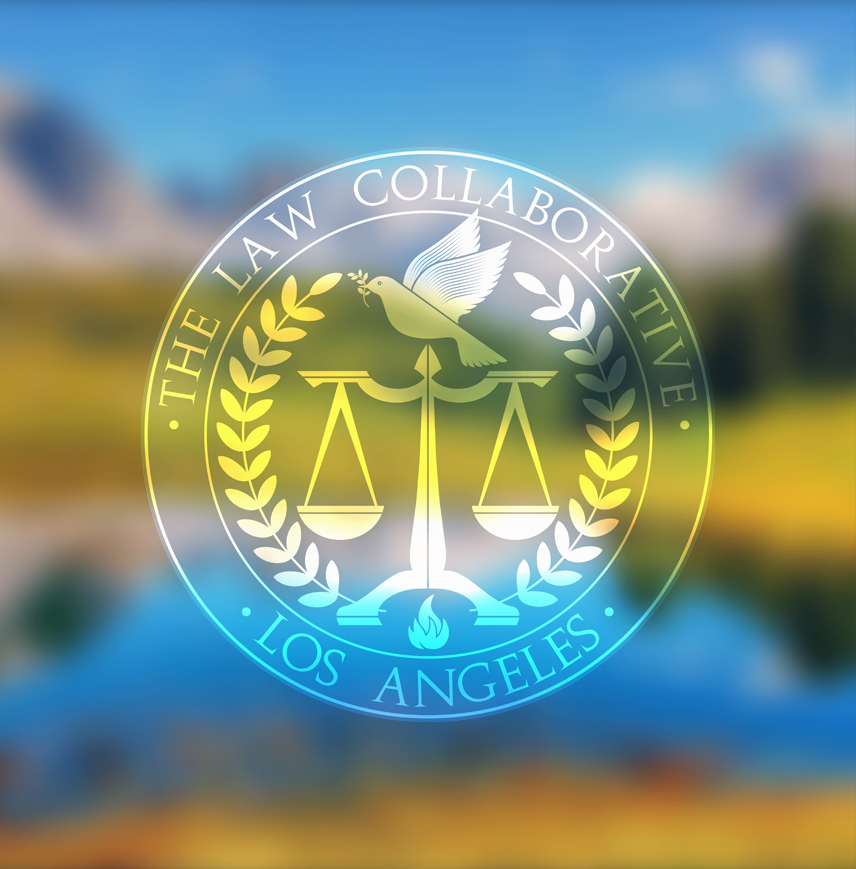There are generally four steps involved in a traditional divorce:
The First Step
The first step in preparing for a divorce is the processing of paperwork. This usually includes preparing the following pleadings:
1. Summons;
2. Petition;
3. Confidential Counseling Statement;
4. Temporary Restraining Orders (if necessary);
5. Order to Show Cause pleadings for the purpose of setting a hearing and requesting relief, if appropriate. Includes the additional filing of
a. Declarations
b. Income and Expense Declarations;
6. Response; and
7. Responsive Declaration to the Order to Show Cause, if appropriate.
Once the Petition for Dissolution is served on the other spouse, the responding party must file a Response within 30 days of service to avoid a default status. Service of the Petition also starts the “clock ticking.” The earliest that a divorce can be granted is six months from the date served. The reason for this six-month wait is to encourage reconciliation of the spouses. If reconciliation occurs, contact your attorney’s office to make sure that your paperwork is stopped. Ask your attorney for referrals to counseling if you wish to reconcile.
In an Uncontested Divorce both parties may settle the issues after the Petition and Response have been filed. A settlement letter and appropriate pleadings are drafted. This gives the other party an opportunity to address the issues in a constructive approach aimed at an early settlement. This has the advantage of saving fees, costs, and emotional distress to both parties. If you feel you have inadequate information with which to make a settlement offer, it is better to wait until after the discovery procedure before offering settlement.
The Second Step
After the pleadings commencing the legal process have been drafted and served, the next step is the Order to Show Cause, which is the initial hearing. Generally the following issues are addressed:
1. Spousal Support;
2. Child Support;
3. Child Custody and Visitation;
4. Restraining Orders;
5. Use of residence;
6. Joinder of any pension plans;
7. Requests for attorney’s fees and costs; and
8. Any other miscellaneous relief, which may be necessary to maintain the stability for the benefit of the parties and children.
Usually, the first hearing will occur approximately 25 to 45 days after the date the Order to Show Cause (OSC) pleadings were filed with the court. At this hearing the attorneys will present an argument regarding how the case ought to be settled. The judge will generally not take testimony at this point. If custody or visitation is an issue, mediation will be ordered by Family or Conciliation Court Services. The recommendation of the mediator may be submitted to the court for review if the parties have agreed to it. (Los Angeles County and Ventura County have different rules regarding mediation).
The purpose of the hearing is to ensure that the children and the supported spouse have sufficient financial resources to maintain the necessities of life.
The Third Step
The third step involved in divorce is usually the discovery phase. This includes taking the deposition of a party or witness, serving form or special interrogatories, and propounding a request for documents. Depositions are generally conducted at the office of the attorney who noticed (requested) the deposition. A court reporter is present who records all the questions and answers, and then transcribes them to book form. Questions are asked for the following purposes:
1. To secure information;
2. To solidify testimony so it may not be changed at future hearings or trial;
3. To obtain necessary documentation to adequately present your case; and
4. To evaluate witnesses for credibility and competency.
Often after a deposition, subpoenas are sent out to verify the information obtained at the deposition.
By the time the first three steps are completed, the emotional involvement of the parties has generally subsided to a level where many cases are in fact resolved by settlement. You then formulate a settlement offer for resolving the case completely, which is usually followed by a counter-offer and a series of negotiations. If the parties reach an agreement on the issues, a settlement agreement or a stipulated judgment is prepared, indicating which assets will be allocated to each party and addressing custody, visitation, and support. The settlement agreement and/or stipulated judgment is filed with the court in which the initial Petition was filed and has the effect of a binding court order. Court appearance is not necessary.
The Fourth Step
If the matter is not resolved by stipulation, it will proceed to trial. Depending on the court’s calendar, a trial date is usually assigned within four months from the date on which a trial is requested.
In Los Angeles County, at the time the trial date is assigned, the court will also schedule a Mandatory Settlement Conference, two weeks before the trial date, requiring the parties to meet with the judge. A brief outlining the issues and arguments is prepared and filed in advance, and the parties and the judge review the briefs and discuss points of settlement if possible. If the issues are not resolved, the case will proceed to trial in two weeks.
In Orange County, the Mandatory Settlement Conference is less formal and has been known to proceed without a brief. In Ventura County and Los Angeles County, the Mandatory Settlement Conference is more formal and requires a written brief.
Substantive Rights and Liabilities in a Divorce
Separate vs. Community Property. Those assets acquired by you before your marriage and after the date of separation with separate property funds are usually considered as your sole and separate property, and are thus clear of any claim by your spouse.
Those assets acquired by you during the course of your marriage are characterized as community property. The exception to this rule is the receipt of gifts, inheritance, and personal injury awards, which are characterized as separate property even during marriage. Community property assets are normally divided equally between you and your spouse.
There may be exceptions and changes to the general parameters mentioned above, which will be reviewed by the court when dividing assets.
Automatic Temporary Restraining Orders (ATROs)
Once the Summons and Petition for Divorce have been filed with the Superior Court restraining orders are in effect. These restraining orders are issued automatically and apply to every case. These orders restrain parties from:
a. Removing minor children of the parties, if any, from the state without prior written consent of the other party or an order of the court;
b. Cashing, borrowing against, canceling, transferring, disposing of, or changing beneficiaries of any insurance or other coverage including life, health, automobile, and disability held for the benefit of the parties and their minor children; and
c. Transferring, encumbering, assuming, concealing, or in any way disposing of any property, real or personal, community, quasi-community, or separate without the written consent of the other party or an order of the court, except in the usual course of business or for the necessities of life.
You must notify each other of any extraordinary expenditures at least five (5) business days prior to incurring them. You must also account to the court for all extraordinary expenditures made after these restraining orders are effective. However, nothing in the restraining orders shall stop you from using community property to pay reasonable attorney fees in order to retain legal counsel in the action.
If you have any questions about the meaning of these restraining orders, contact your attorney.
Psychological Aspects of a Divorce
Elisabeth Kubler Ross has written a treatise upon the stages of death and dying. The stages occur as follows:
First Stage:Denial and Isolation;
Second Stage:Anger;
Third Stage:Bargaining;
Fourth Stage:Depression; and
Fifth Stage:Acceptance.
Many experts believe spouses in divorce proceedings go through the same stages. If true, this process would have a direct effect on the ability of the spouses to communicate with one another. Communication is required to minimize litigation, which is financially and emotionally costly.
For example, a spouse in the stage of anger communicates with a spouse in the stage of acceptance about as well as an English speaking person speaking to a person who only understands Hungarian. It often takes time for both spouses to work through the emotional turmoil of a divorce before they can get to a stage where they can communicate clearly. Patience and good judgment is also required to know when it is appropriate to embark on settlement discussions.
Estate Planning
It is critical that a divorcing party reconsider his or her estate planning. This would include, for example, preparing a new Will or revoking any Power of Attorney or Trust Agreement.
You will also want to reconsider dividing any property held in joint tenancy between you and your spouse. The feature of joint tenancy is right of survivorship, which means if one spouse dies, the other spouse by law, succeeds to total ownership of the property, even if the descendant had a different Will. For example, if you die, your spouse would become full owner of all property held in joint tenancy, regardless of the terms of your Will. Of course, the same is true if your spouse were to predecease you; you would become fully owner of all property held in joint tenancy.
Epstein Credits
You may be entitled to “Epstein Credits.”
These are debts that exist as of the Date of Separation (DOS). They are generally community debts regardless of which party incurred them. Income earned by either party after the DOS is that person’s separate property. If income earned after the DOS is used to pay community debts, then, with certain exceptions, you will be entitled to a reimbursement at the time of the division of community property. This reimbursement is defined as an “Epstein Credit.” It is helpful to think of it as separate property being used to pay community debts.
In order to prove these credits, you need to keep copies of the bills showing the amount owed close to the date of separation, with monthly statements thereafter, and the canceled checks that are used to make payments following the DOS, and that these payments were made from a separate property source.
An additional accounting problem arises when charges on a joint account are made after the DOS. The problem is the allocation of the interest assessed against the separate charges as distinguished from community charges. It is very difficult if not impossible to determine these charges. The same problem arises when charges and payments after the DOS occur. The judge will often allocate the interest between the community and separate debt. So as to avoid this problem, it is best to make charges after the Date of Separation on accounts that have no community obligations.
While the legislature intended these equitable concepts to do good, the old adage “no good deed goes unpunished” raises its ugly head yet again. The economy has a lot to do with it. Epstein is no panacea, and is wholly discretionary. Under some conditions, a spouse could lose a separate property asset, even the family home, because there is no equity in it and a credit due the partner spouse may be larger than an asset is worth. [i.e. an upside down house] Long-term marriages present other major problems.
The biggest cost is tracing – the art of gathering each check/payment/receipt in order to prove the credit. The person claiming the credit must prove the credit. So where does one get checks from banks that long ago merged or went bankrupt? If you failed to keep the records, you lose the credit, regardless of the equity or amount.
Joint Credit Cards (community property v. contract law)
Debt incurred after the Date of Separation is the separate obligation of the incurring spouse under Community Property Laws. A different wrinkle under contract law is added when such a debt is incurred on a joint credit card.
Under such circumstances, both spouses are jointly liable for the obligation under the contract they signed at the time the joint credit card was issued. This means that under the community property law, a debt incurred against a joint credit card by one of the spouses is the obligation of that spouse. But if the spouse incurring the debt does not pay, the creditor under contract laws can charge the other spouse. In short, consider carefully whether you want to cancel joint credit cards and credit lines.













